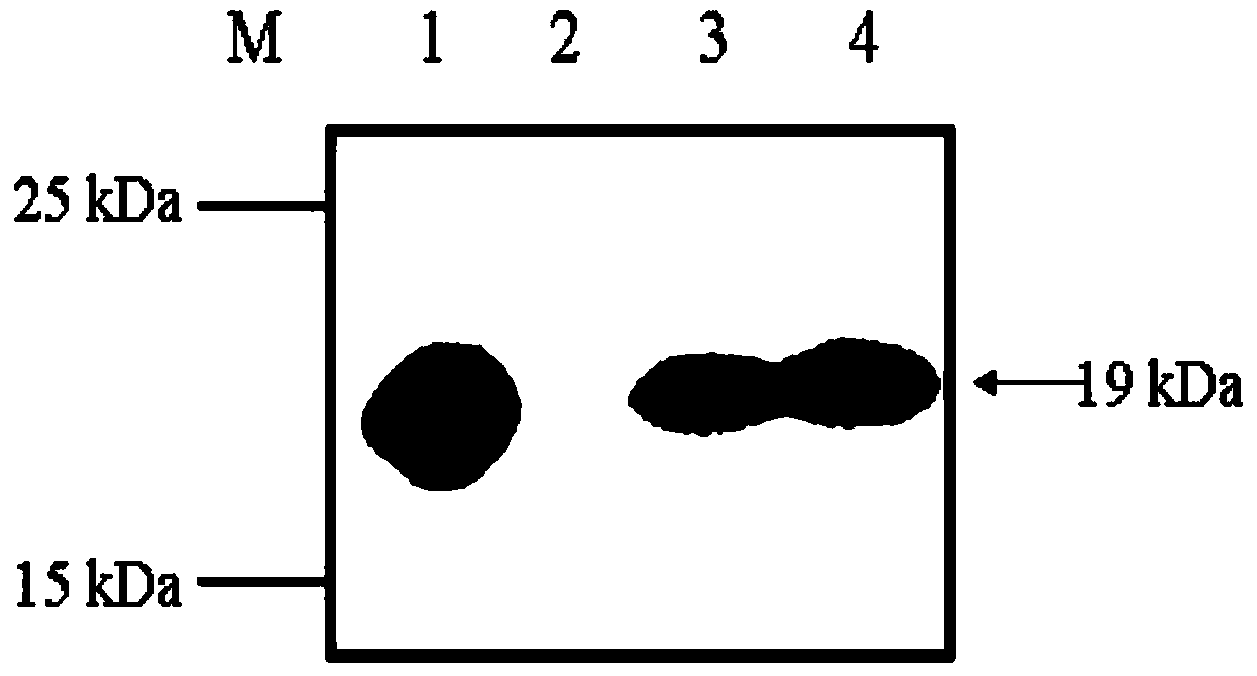Lactococcus lactis recombinant bacteria for expressing hypoallergenic peanut allergen, and application thereof
A peanut allergen and Lactococcus lactis technology, applied in the field of bioengineering, can solve the problems that hinder the large-scale promotion and application of the Escherichia coli expression system, and achieve the effect of reducing side effects and avoiding allergic reactions
- Summary
- Abstract
- Description
- Claims
- Application Information
AI Technical Summary
Problems solved by technology
Method used
Image
Examples
Embodiment 1
[0019] Embodiment 1 The acquisition of hypoallergenic gene mArah2
[0020] (1) Optimization of natural peanut allergen gene Arah2:
[0021] The signal peptide sequence was deleted in the amino acid sequence of Arah2 (genbank: AAN77576.1), and the codon optimization of the Arah2 gene sequence was carried out in combination with the codon preference of Lactococcus lactis, and subcloned into pUC57 to obtain a natural allergen optimization Plasmid pUC57-nArah2 of the gene nArah2 (synthesized by Shanghai Sangon, where pUC57 is a commercialized plasmid).
[0022] (2) Modified mutation of natural allergen optimization gene nArah2:
[0023] The aa47-56 antigenic epitope is disconnected and rearranged according to the amino acid sequence of 50-151-1-49 to obtain the peanut allergen gene mArah2 with low allergenicity. The relevant sequence is as follows:
[0024] Native gene sequence before optimization (genbank: AY158467.1), SEQ ID No.1.
[0025] The optimized gene sequence (mArah2...
Embodiment 2
[0028] Example 2 Construction of recombinant expression vector containing hypoallergenic gene mArah2
[0029] Rearrangement and splicing of target fragments aa1-49 and aa50-151: Using the plasmid pUC57-nArah2 (synthesized by Shanghai Sangon, where pUC57 is a commercialized plasmid) as a template, use primers P1F: CAGGTGGTCGTGATCGTTA TCGTCAACAATGGGAATTAC / P1R: CCCTCGAGATCTTGTGATGGTGAATATG and primers P2F :CGCCATAT GCCATATTTCTCTTCACAAG / P2R:GTAATTCCCATTGTTGACG ATAACGATCACGACCACCTG Amplifies aa1-49 and aa50-151 fragment genes. The PCR products of the two gene fragments were detected and purified by 1% agarose gel electrophoresis. The target fragments aa1-49 and aa50-151 were spliced by overlapping region amplification gene splicing method. The amplification system is as follows (total volume: 50 μL): 10×KOD plus buffer: 5 μL; dNTP: 5 μL; MgSO4: 2 μL; template 1-49: 2 μL; template 50-151: 2 μL; KOD enzyme: 0.5 μL; μL. After 5 cycles, add 1 μL each of the upstream and downstream...
Embodiment 3
[0030] The preparation of embodiment 3 recombinant Lactococcus lactis
[0031] The ligation reaction product above was transformed into L. lactis NZ9000 (Kuipers et al. Quorum sensing-controlled gene expression in lactic acid bacteria. Journal of Biotechnology. 1998, 64(1): 15-21) competent cells by electroporation. The transformants were picked for sequencing verification, and the recombinant plasmids and transformants with correct sequencing were named pNZ8148-mh2 (self-constructed) and L.lactis NZMH respectively. L.lactis NZ9000 and L.lactis NZ9000 strains recombinantly expressing nArah2 protein Named L. lactis NZ and L. lactis NZNH.
PUM
 Login to View More
Login to View More Abstract
Description
Claims
Application Information
 Login to View More
Login to View More - R&D
- Intellectual Property
- Life Sciences
- Materials
- Tech Scout
- Unparalleled Data Quality
- Higher Quality Content
- 60% Fewer Hallucinations
Browse by: Latest US Patents, China's latest patents, Technical Efficacy Thesaurus, Application Domain, Technology Topic, Popular Technical Reports.
© 2025 PatSnap. All rights reserved.Legal|Privacy policy|Modern Slavery Act Transparency Statement|Sitemap|About US| Contact US: help@patsnap.com



